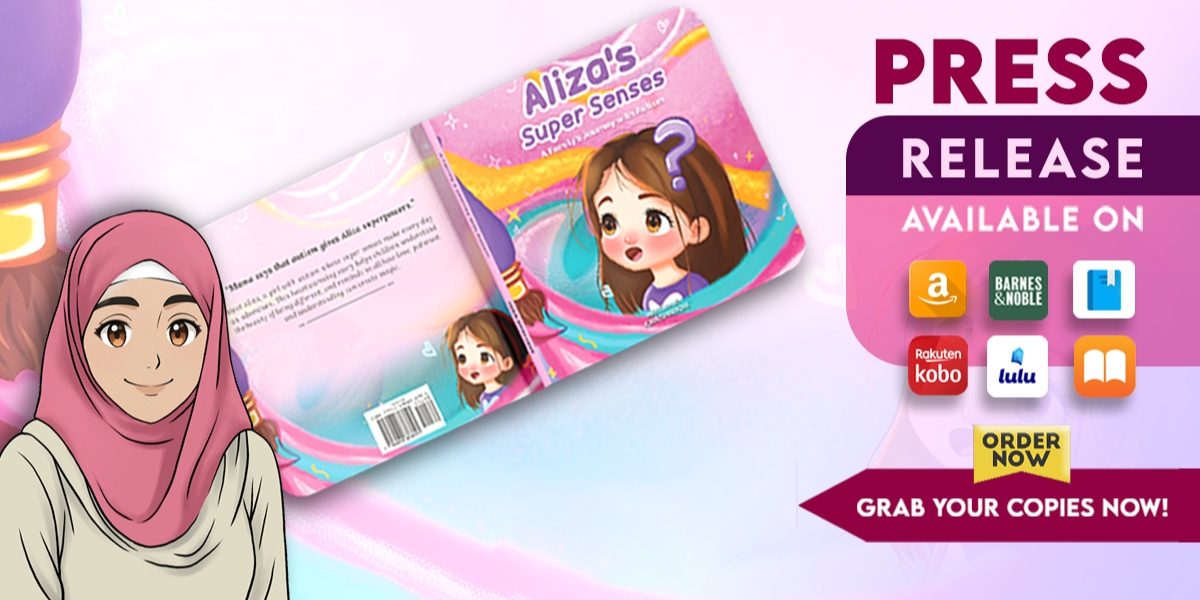Autism affects millions of families worldwide, and with growing awareness comes a demand for resources that not only explain the condition but also build empathy. Too often, children’s books either oversimplify autism or lean too heavily on clinical descriptions. Aliza’s Super Senses strikes a rare balance. It combines the warmth of storytelling with practical insights, helping siblings, parents, and caregivers better understand the lived experience of autism.
The book, Aliza’s Super Senses, is narrated by Ellie, the older sister of Aliza, a child whose world is shaped by autism. Guided by “Mama’s” steady explanations, Ellie presents her sister’s differences not as shortcomings, but as unique “superpowers.” This approach reframes autism through a lens of strength, turning challenges into opportunities for family learning and love.
From the very first pages, Aliza’s sensory world takes center stage. The book avoids medical jargon and instead relies on vivid, everyday examples. A simple slice of cheese pizza feels unbearably spicy. A speck of pepper is overwhelming. Thunder roars like motorbikes racing across the sky. By grounding these experiences in tangible imagery, the narrative helps children and adults alike appreciate the intensity of sensory processing differences.
Each sense becomes a lesson. Taste shows how textures and flavors can overwhelm or comfort. Hearing highlights how a child with autism can notice faint whispers but struggle with everyday sounds like coughing or crying. Sight illustrates the paradox of avoiding eye contact while still noticing tiny details, such as always finding Ray’s hidden markers. These scenes encourage families to understand that behaviors often dismissed as “strange” are rooted in very real sensory differences.
Beyond senses, the book also touches on communication. Aliza sometimes echoes questions instead of answering them, a pattern known as echolalia. Rather than becoming frustrated, Ellie models patience by giving her choices: “Are you happy or sad? Good or bad?” Mama reinforces that reminders are needed every time, showing families that repetition is not failure but a path to progress.
Social interaction and boundaries receive equal attention. Aliza loves hugs, but sometimes too tightly. Instead of shaming her, Mama teaches Ellie to set limits gently with phrases like, “No hugs,” while encouraging Aliza to use words. This reflects a larger truth about autism: growth happens not through punishment but through steady, supportive guidance.
Importantly, Aliza’s Super Senses does not ignore the strain autism can place on siblings. Broken crayons, snatched toys, or ill-timed laughter are part of Ellie and Ray’s frustration. Yet the book models healthier responses. Mama reminds them that yelling only teaches more yelling, encouraging calm correction and empathy. For readers, these lessons extend beyond the story; they become practical strategies for real households navigating similar challenges.
What makes this book stand out is its dual role. It is both a sibling’s heartfelt story and a subtle handbook for families. Without overloading readers with clinical terms, it delivers essential truths.
By offering both a narrative and educational value, Aliza’s Super Senses empowers families to embrace autism with empathy and understanding. The book encourages readers to not only support those with autism but to celebrate their unique qualities, fostering a sense of inclusion and respect that transcends the pages.
Aliza’s Super Senses is more than a children’s story; it is a book of hope, resilience, and family love. With its combination of relatable storytelling and practical wisdom, it belongs not just on children’s bookshelves but also in classrooms, libraries, and family discussions about inclusion. This uplifting guide is now available on Amazon and other major platforms in both paperback and digital formats, making it an accessible resource for families everywhere.

















